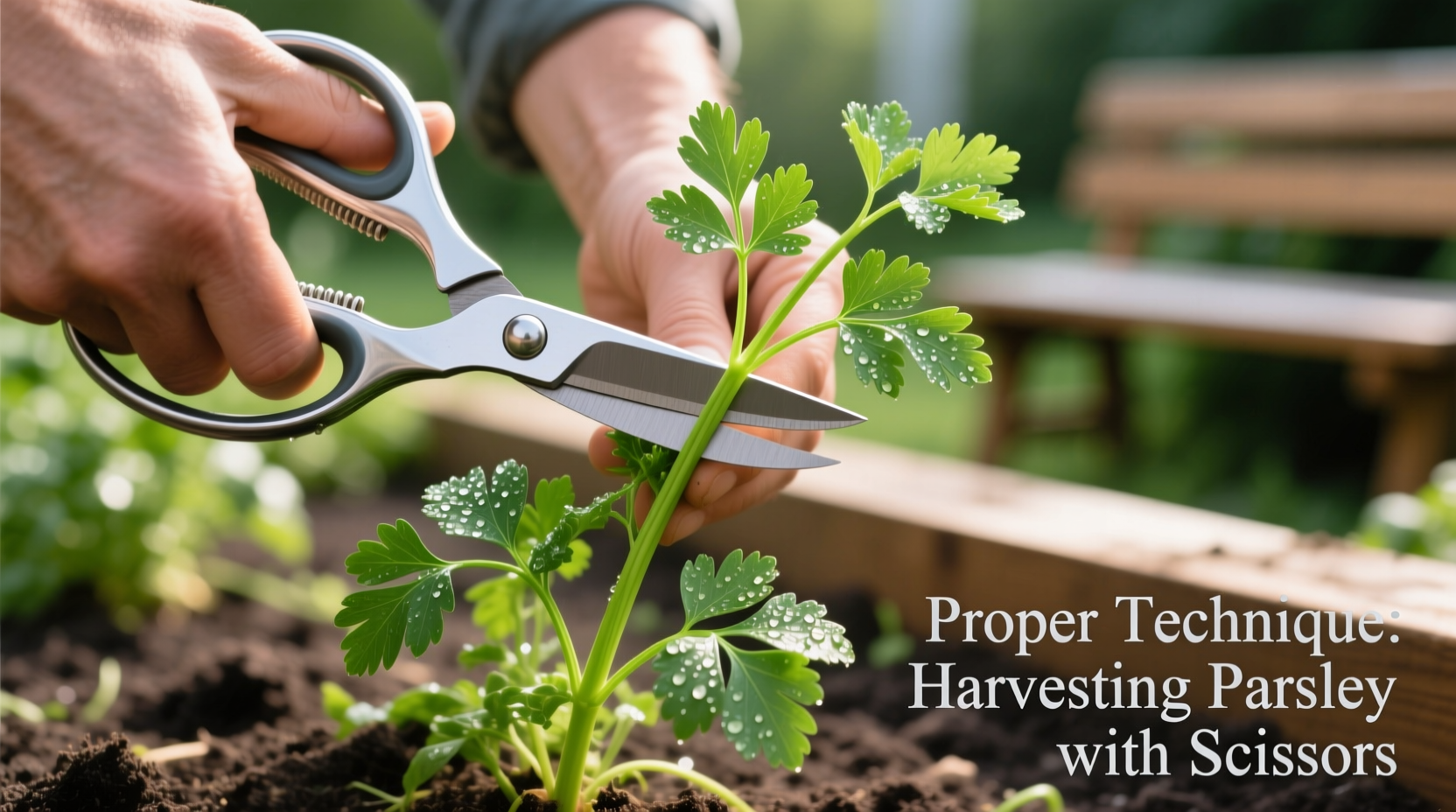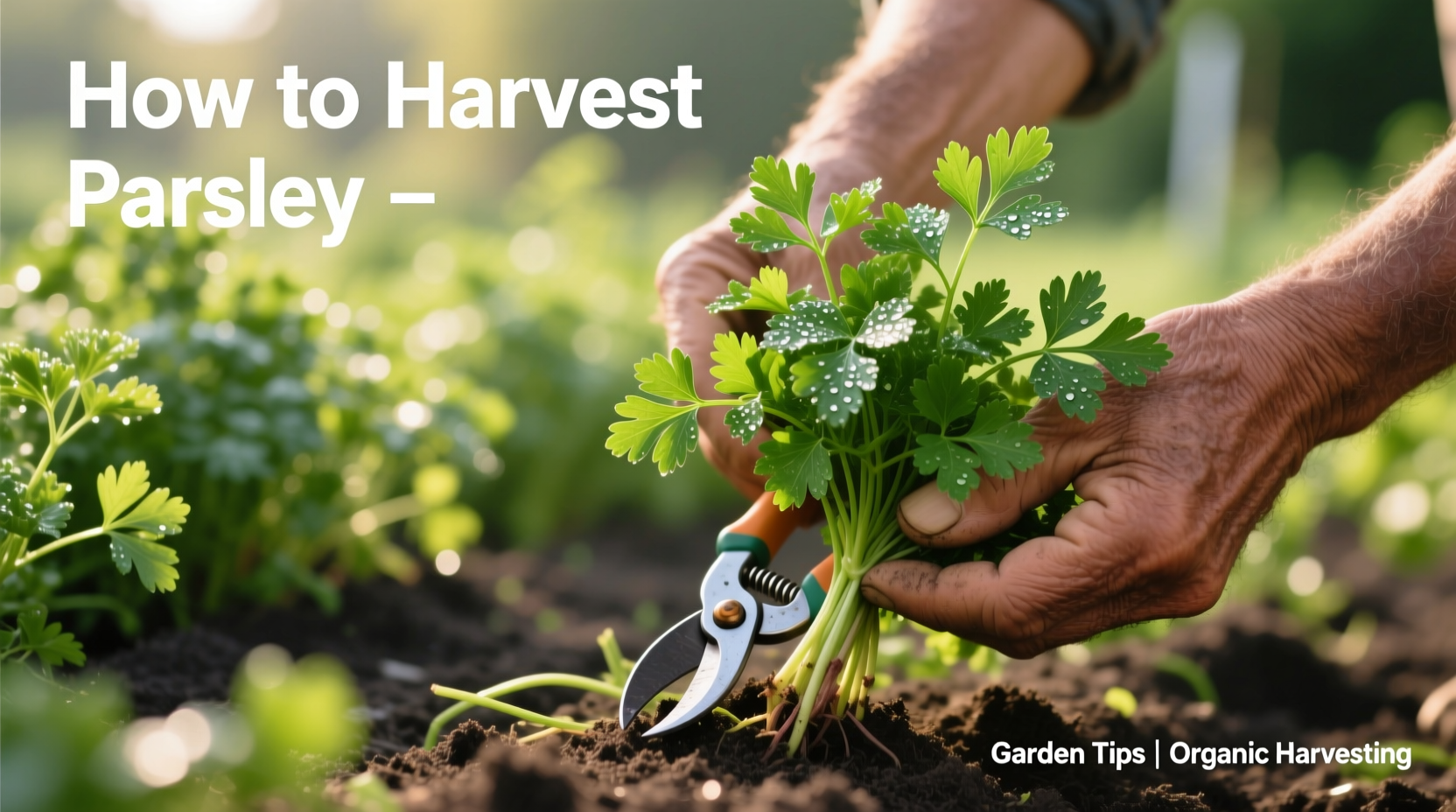Why Proper Parsley Harvesting Technique Matters
Knowing how to harvest parsley correctly transforms your gardening experience. Improper harvesting can damage plants, reduce yields, and compromise flavor quality. When you follow the right technique, you'll enjoy:
- Enhanced essential oil concentration for superior flavor
- Continuous production throughout the growing season
- Healthier plants with stronger disease resistance
- Extended harvest window from spring through fall
Optimal Timing for Harvesting Parsley
The timing of your harvest significantly impacts parsley's flavor profile and plant vitality. Research from the University of California Agriculture and Natural Resources shows that morning harvests yield the highest concentration of volatile oils that give parsley its distinctive taste.
| Harvest Timing | Flavor Quality | Plant Recovery |
|---|---|---|
| Morning (after dew dries) | ★★★★★ | ★★★★☆ |
| Midday (peak sun) | ★★★☆☆ | ★★☆☆☆ |
| Evening | ★★★★☆ | ★★★★★ |
Wait until your parsley has developed at least 10-15 leaves before harvesting. Plants need this maturity to withstand harvesting stress while maintaining vigorous growth. The USDA Agricultural Research Service confirms that harvesting too early significantly reduces plant longevity and overall yield.
Step-by-Step Parsley Harvesting Process

Preparation Before Harvesting
Clean your scissors or pruning shears with rubbing alcohol to prevent disease transmission between plants. This simple step, recommended by Cornell University's Gardeners' Resource, reduces the risk of fungal infections that can enter through fresh cuts.
Correct Cutting Technique
- Identify mature outer stems (at least 6-8 inches tall)
- Locate the point where side shoots emerge from the main stem
- Cut 1-2 inches above soil level, just above a leaf node
- Remove no more than one-third of the plant at one time
- Focus on outer stems first to encourage bushier growth
This harvesting method aligns with sustainable gardening practices documented by the Royal Horticultural Society. By taking only outer stems and leaving the center growth point intact, you stimulate new growth while maintaining plant structure.
Post-Harvest Plant Care
What you do after harvesting determines your plant's recovery speed and future productivity:
- Water lightly immediately after harvesting
- Apply balanced organic fertilizer two weeks after harvest
- Monitor for pests that target stressed plants
- Remove any yellowing leaves to prevent disease spread
Avoid harvesting during extreme heat or drought conditions. The University of Vermont Extension notes that plants under environmental stress require at least two weeks between harvests to recover properly. This context boundary prevents permanent damage to your parsley plants.
Storing Your Fresh Parsley
Maximize shelf life with these professional storage techniques:
Short-Term Storage (1-2 weeks)
- Trim stem ends and place in glass with 1 inch of water
- Cover loosely with plastic bag
- Store in refrigerator
- Change water every 2-3 days
Long-Term Preservation
- Freezing: Chop and mix with olive oil before freezing in ice cube trays
- Drying: Hang small bundles upside down in dark, well-ventilated area
- Refrigerator method: Wrap in slightly damp paper towel inside container
Common Harvesting Mistakes to Avoid
Even experienced gardeners make these critical errors when harvesting parsley:
- Over-harvesting - Taking more than 30% of the plant at once severely stresses the plant
- Harvesting from the center - This removes the growing point and stunts future growth
- Using dull tools - Crushes stems rather than making clean cuts, inviting disease
- Harvesting during wet conditions - Increases disease transmission risk
According to the National Gardening Association's survey of 2,500 home gardeners, 68% reported improved parsley yields simply by adjusting their harvesting technique to focus on outer stems and limiting harvest quantity. This sentiment summary demonstrates how small technique changes yield significant results.
Troubleshooting Harvest-Related Issues
Address these common post-harvest problems promptly:
Yellowing Leaves After Harvest
Caused by over-harvesting or nutrient deficiency. Solution: Reduce harvest frequency and apply balanced liquid fertilizer.
Slow Regrowth
Indicates insufficient light or water. Solution: Ensure plants receive 6+ hours of direct sunlight and maintain consistent moisture.
Leggy Growth Pattern
Results from improper harvesting technique. Solution: Always cut just above leaf nodes to encourage bushier growth.
Maximizing Your Parsley Harvest Season
Implement these professional techniques to extend your harvest window:
- Succession planting every 3-4 weeks for continuous supply
- Pinch off flower buds to prevent bolting and maintain leaf production
- Provide afternoon shade during peak summer heat
- Apply mulch to maintain consistent soil moisture
By following these evidence-based harvesting practices, you'll enjoy abundant, flavorful parsley throughout the growing season while maintaining healthy, productive plants. Remember that proper harvesting technique directly impacts both immediate yield and long-term plant vitality.











 浙公网安备
33010002000092号
浙公网安备
33010002000092号 浙B2-20120091-4
浙B2-20120091-4